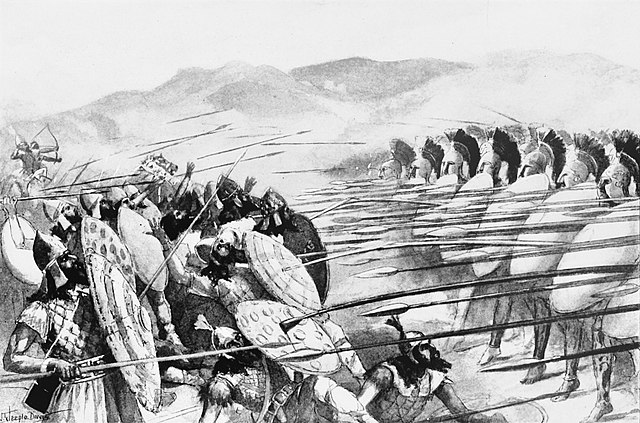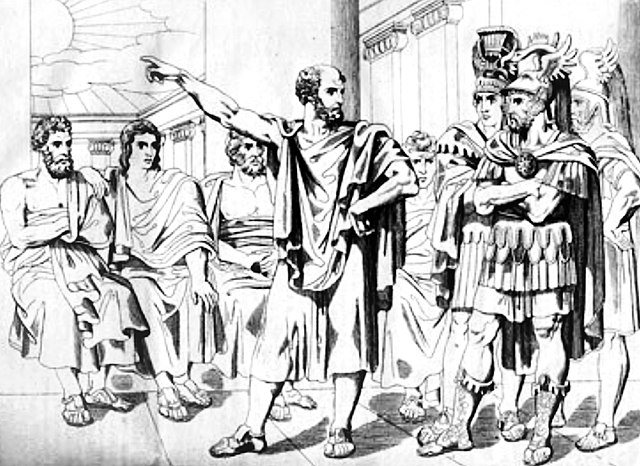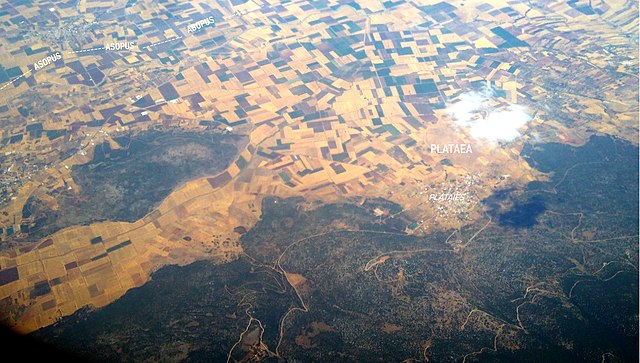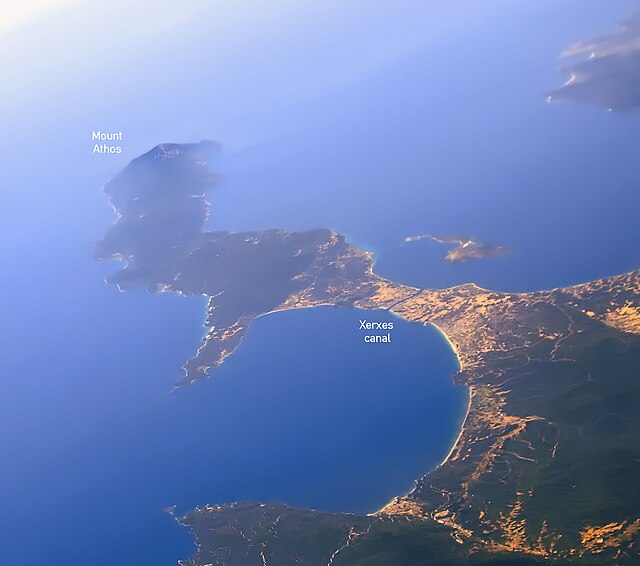The Battle of Plataea was the final land battle during the second Persian invasion of Greece. It took place in 479 BC near the city of Plataea in Boeotia, and was fought between an alliance of the Greek city-states, and the Persian Empire of Xerxes I.
Persians and Spartans fighting at Plataea. 19th century illustration.
The Achaemenid Empire and its allied Greek states (Macedonia, Thessaly, Malis, Locris, Phocis and Boeotia) at the time of the Battle of Plataea.
Answer of Aristides to the ambassadors of Mardonius: "As long as the sun holds to its present course, we shall never come to terms with Xerxes".
View of the battlefield from above. The battle took place on the hilly plain between the Asopos river (top) and Plataea (center right).
Second Persian invasion of Greece
The second Persian invasion of Greece occurred during the Greco-Persian Wars, as King Xerxes I of Persia sought to conquer all of Greece. The invasion was a direct, if delayed, response to the defeat of the first Persian invasion of Greece at the Battle of Marathon, which ended Darius I's attempts to subjugate Greece. After Darius's death, his son Xerxes spent several years planning for the second invasion, mustering an enormous army and navy. The Athenians and Spartans led the Greek resistance. About a tenth of the Greek city-states joined the 'Allied' effort; most remained neutral or submitted to Xerxes.
Second Persian invasion of Greece
The Spartans throw Persian envoys into a well.
Rendition of the Xerxes Canal (seen from north), built over 3 years from 483 BC across the Mount Athos peninsula. It is now filled-up.
Preparations of the army of Xerxes, with quarters in Sardis in 481–480 BC, and crossing of the Hellespont at Abydos.








